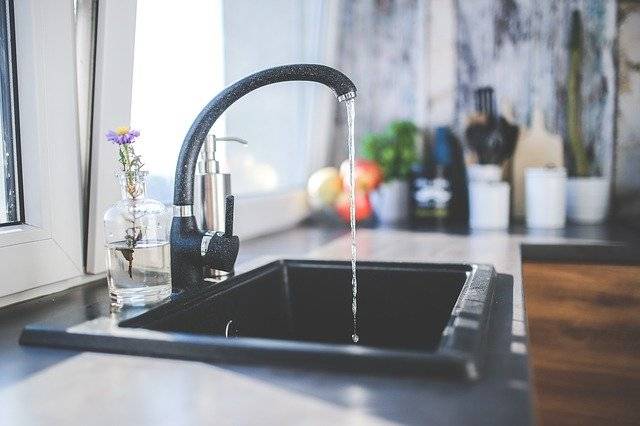Ways to Draining A Kitchen Sink
You can explicitly describe the pain and hassles if you ever dealt with a backed-up or clogged kitchen sink. Watching as the dirty water rises to flood your kitchen can be an awful experience. Here is everything you need to know about how to drain kitchen sink quickly and safely.
Related: Key benefits of using a professional drain cleaning
Unlock the Kitchen Sink Using Hot Water
Your kitchen sink will back up when soap, hair, and grease residue built up and clog the drain. You can try the first DIY hack when your sink has backed up to attack it with hot water. You will be surprised to note that it is easy to unclog the kitchen sink drain by pouring hot water down the drain. This is an important step before calling a drain cleaning professional.
Boil the water to the highest and then splash it on the kitchen sink. As the hot water flows to the pipes, it will loosen the clog. Follow these steps to efficiently and quickly unlock your kitchen sink using hot water:
- Boil half a gallon of water on a stove. You can boil it in a kettle or your electric hot water jug.
- Once the water has boiled, empty it into your kitchen sink drain opening
- Let the hot water flow through the sink drain for several minutes, and then turn on the kitchen water tap.
- The water in an unclogged drain will flow steadily. If the drain is clogged, the water will drain slowly.
- Repeating the process can help unlock hard-to-remove residues.
NB: Don’t ever try unblocking your kitchen sink with hot water if the drain is connected to PVC pipes, as that would likely destroy or melt the plastic material. Do this and you’ve created a costly plumbing emergency.
Related: What is the most energy efficient water heater?
How to Drain Kitchen Sink using a Clean Plunger
If unclogging the kitchen sink with hot water doesn’t work, you can try plunging it with a plunger. Just like boiling water, plunging is only suitable for clearing minor clogs. You may want to use a toilet plunger if you have no alternative. Here are steps to efficiently plunge your kitchen sink.
- Empty most of the water in your sink basin. You can leave a small amount to aid with the suction when you’re plunging the drain.
- Using a plunger, plunge the drain gently and cautiously. You’re required to use a single flat rim plunger. The single flat rim design helps in creating a seal around your drain to optimize suction.
- As you thrust the plunger down and up swiftly, ensure to keep a water-tight seal over the drain hole. That creates enough suction to ease the unclogging process.
- It would take you several minutes of thorough plunging to unclog most drain clogs. You can repeat the plunger thrusting process as many times as possible until you clear the drain clog.
Use Baking Soda and Vinegar
If you don’t have a plunger or have tried boiling water to no success, you may want to try vinegar and baking soda to dissolve the clog. When introduced to the drain opening, the vinegar and baking soda solution will cause a bubbling reaction to break large sludge pieces.
Pour baking soda into the drain opening and allow it to sit there for several minutes. It would be best if you pushed the baking soda down the drain pipe. You can use any available tool: a wooden spoon, plastic utensil, or rubber spatula. You want to avoid anything sharp that could scrape or put dents on your sink.
Once the baking powder sits for several minutes, pour white distilled vinegar and ensure it flows directly into the sink drain opening. The two will react against each other, creating a fizzy reaction, which aids loosen the clog. Plug the sink drain for several minutes and add hot water to push down the clogging using a stopper.
Use a Professional Plumber’s Snake
For clogs that have defied all the above methods, use a plumber’s snake. The snake is the most reliable tool for battling kitchen sink drain blockages. The plumber’s snake comes in the form of a coiled spiral snake-like tool that can go deep into your drain. You have to push the snake into your kitchen drain to check for clogs.
When the snake has hit a clog, you will need to maneuver the snake handle to remove the clog. Using an electric plumber’s snake is recommended as it’s more powerful and efficient in dislodging and removing clogs.
You don’t necessarily need to buy a plumber’s snake to get the job done. You can craft your makeshift from scratch using a wire coat hanger. If you’re an enthusiast DIYer, you’ll find it fun and easy to create a makeshift plumber’s snake.
Get your needle-nose pliers and uncoil the hanger until the wire is straight. It would be best to untangle the hooked end as you will need it to catch and clear off the clogs in your kitchen drain. Use pliers to fine-tune the hook angle to ensure it can smoothly fit into your kitchen drain opening.
Whether you’re using a plumber’s snake or a makeshift, you must be careful while inserting it in the drain. You have to push it down the drain with moderation, as applying too much pressure will advance the clog further, making it hard to remove.
Whenever your tool’s tip has hit a clog, you should latch it on and then pull it out of the drain. You have to repeat this process until you clear the clog.
Learning Resource: Pros and Cons of Tankless Water Heaters
How to Drain Kitchen Sink – Conclusion
Try any or all of these techniques to unclog the kitchen sink and improve the efficient water flow. If you’re good at DIY projects, it will be a fun moment to up your game and improve your skills. However, if you’re not a good DIYer, you are better off hiring a highly qualified and experienced plumber to help with the same.






